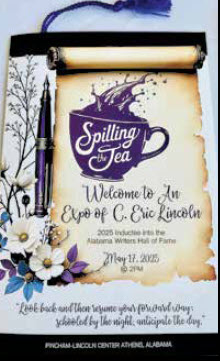 By: Ali Elizabeth Turner
By: Ali Elizabeth Turner
James Clear was a true lover of baseball, and played it from the time he could swing a bat. Then came the day when someone accidentally let go of a bat after a swing and hit James right between the eyes. It nearly killed him, and he had to learn how to do just about everything all over again.
It is often the worst stuff that brings forth the best stuff in our lives. And the process James went through to regain his life forced him to learn the art and science of making and breaking habits. This has garnered him a New York Times bestselling book with 5 million copies sold, and a fierce following of people who swear by his research and methodology.
Frankly, I have rarely read something that has made so much sense. It is practical, and when Clear talks about “easy,” he is not implying that things change somehow by osmosis or without effort, but that anything broken down to the “atoms” that make it up can be manageable and changeable.
The success stories are impressive, but not unrealistic. For example, one woman lost close to 100 pounds by continually asking the following question: “What would a healthy person do in this situation?” The “situation” to which she was referring was the zillion cues she would encounter throughout the day that normally would inspire her to eat everything in sight. She did not diet in the classic sense, followed no particular eating plan; she just continually put herself out there as a person who could manage her relationship with food, and she became just that.
There are four components that make up the things we do unconsciously, like brushing our teeth. They are cue, craving, response, and reward. Just learning how to identify them and being more aware of what we are doing at any given moment go a long way toward helping our brain construct a feedback loop, that evidence of an internalized habit that we just do without a whole lot of willpower. Most people don’t have to “push back from the table” or exert tremendous willpower in order to brush their teeth on a regular basis, and what James discovered on his journey back to functionality is that the same principles can apply to our most obstinate and challenging behaviors.
Here is a review for Atomic Habits:
“I’ve read a lot of books on changing behavior and building habits and James Clear’s Atomic Habits is my new favorite. This book is different from others in the way it covers an enormous amount of ground in the larger area of self-improvement while seamlessly tying all these ideas back into the central theme of habits.
“One of the core concepts in Atomic Habits is to focus on the small improvement. The impact a 1% improvement per day can make may appear negligible at first, but Clear makes a compelling argument that in the case of habits, thinking small produces the biggest results over time. “Habits are the compound interest of self-improvement,” explains Clear.
“Over the months and years, the accumulated effect of small habitual daily behaviors is staggering. Early in the book we are also warned that this compounding works both ways, so we’d better make sure we’re making it work in the positive direction, not for the negative.”
I hope you find this book as helpful as I have, and trust that the idea of habits being “atomic” brings you hope.










 June 20, 2025
June 20, 2025



